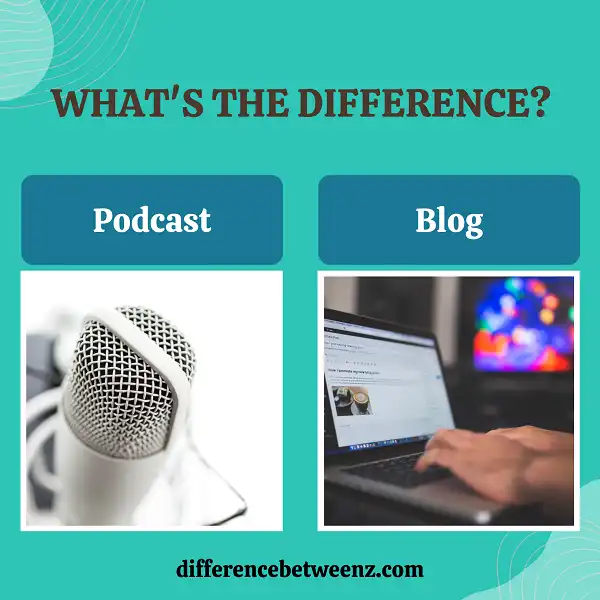There are a lot of similarities between podcasts and blogs, but there are some key differences as well. Both formats allow you to share your thoughts and ideas with the world, but podcasts can be audio-only while blogs can include images, videos, and other multimedia elements. Podcasts also tend to be longer in length than blog posts, typically ranging from 10-30 minutes compared to 3-5 minutes for most blogs. And finally, podcasts are typically released on a weekly or monthly basis, while blog posts can be published as often or infrequently as you like.
What is a Podcast?
- A podcast is a digital audio file made available on the Internet for downloading to a computer or portable media player, typically available as a series, new episodes of which can be received by subscribers automatically. Podcasts are usually free of charge to listeners and can often be created at little cost to producers. They are often financed through advertising, sponsorship, or donations. Production costs include time, equipment, hosting charges, and editing.
- Podcasting is a form of syndicated content much like blogging. RSS (Really Simple Syndication) is used to syndicate content and make it available for subscriptions. While originally designed for blog syndication, it is now being used by many different types of online publishers to syndicate audio and video content.
- iTunes also has built-in support for podcasting which makes subscribing to and listening to podcasts very easy with their popular iTunes software. Podcasts are usually distributed as an MP3 file but can also come in other audio formats such as AAC, WMA, or OGG Vorbis.
What is Blog?
- A blog is a web log, or online journal, that is maintained by an individual or group of individuals. The content of a blog can be text, images, video, or audio, and is typically updated on a regular basis.
- Blogs can be personal in nature, detailing the life of the author, or they can be focused on a particular subject. While some blogs are used as a platform to share opinions or provide information, others function more like an online diary, documenting the day-to-day lives of their authors.
- Regardless of their purpose or style, blogs have become a popular way for people to connect with each other and share information. Many bloggers build up a regular following of readers, who return to the site to read new posts and learn about what is going on in the blogger’s world.
Difference between Podcast and Blog
- There are a number of key differences between podcasts and blogs. Perhaps the most obvious difference is that podcasts are audio-based, while blogs are typically text-based. This means that podcasts can be consumed while doing other activities, such as driving or exercising, whereas blogs require the reader to be able to read and comprehend the written word.
- Another key difference is that podcasts are usually episodic, with new episodes released on a regular schedule, while blogs tend to be more static, with new posts appearing less frequently. Finally, podcasts often have a narrower focus than blogs, with each episode covering a specific topic in depth, while blogs tend to cover a wider range of topics more superficially.
- While there are some significant differences between podcasts and blogs, they also share some commonalities, such as the fact that both are typically free to consume and can be easily produced using readily available technology.
Conclusion
Podcasting and blogging are both powerful tools that can help you reach your target market, but they have different strengths. When deciding which format to use for your content, it’s important to consider what you want to achieve.
If you want to build a relationship with your audience and provide them with valuable information, a blog is the way to go. But if you want to share longer pieces of content or reach a larger audience, podcasting may be the better option. No matter which route you choose, make sure the content is high quality and provides value for your customers.


